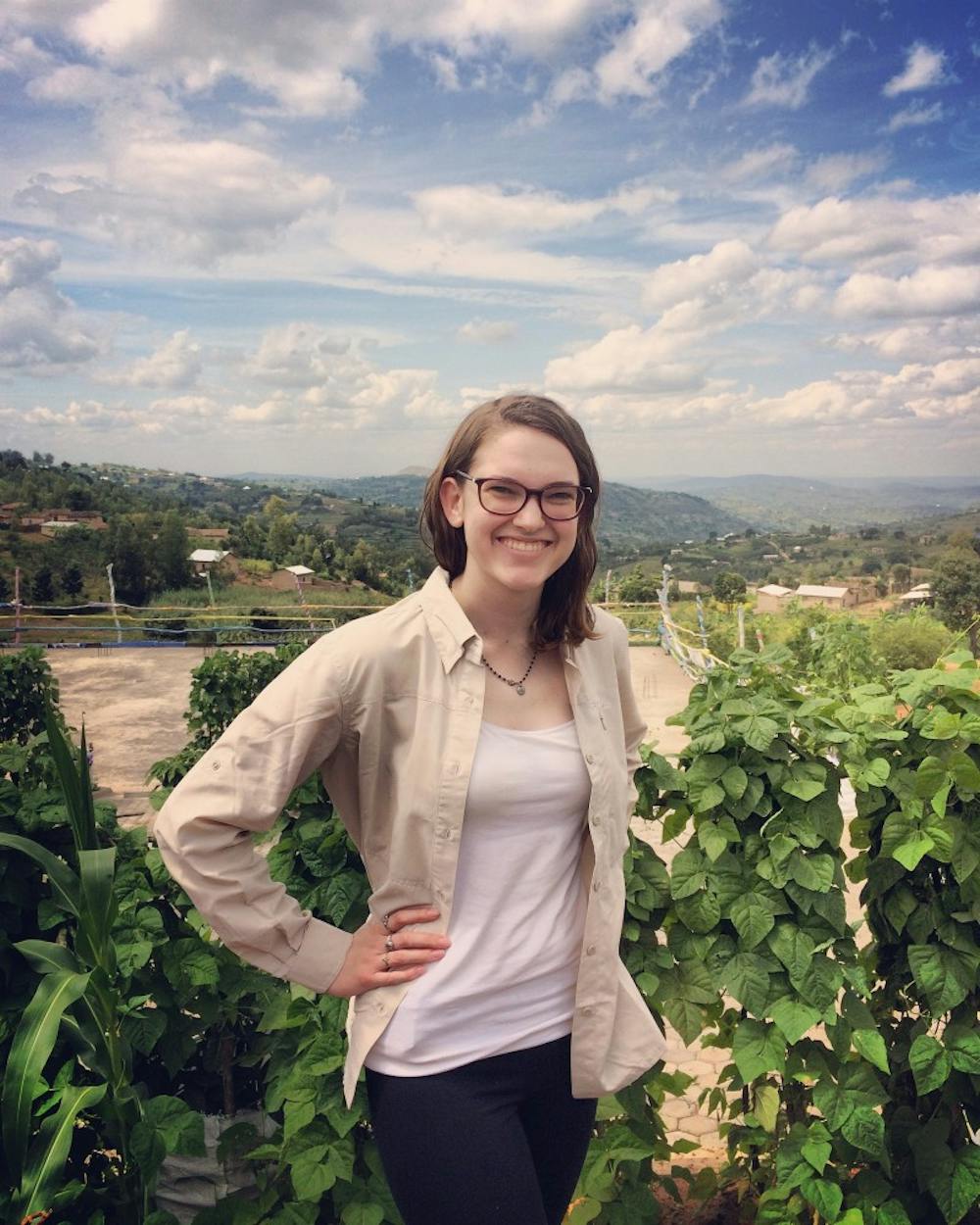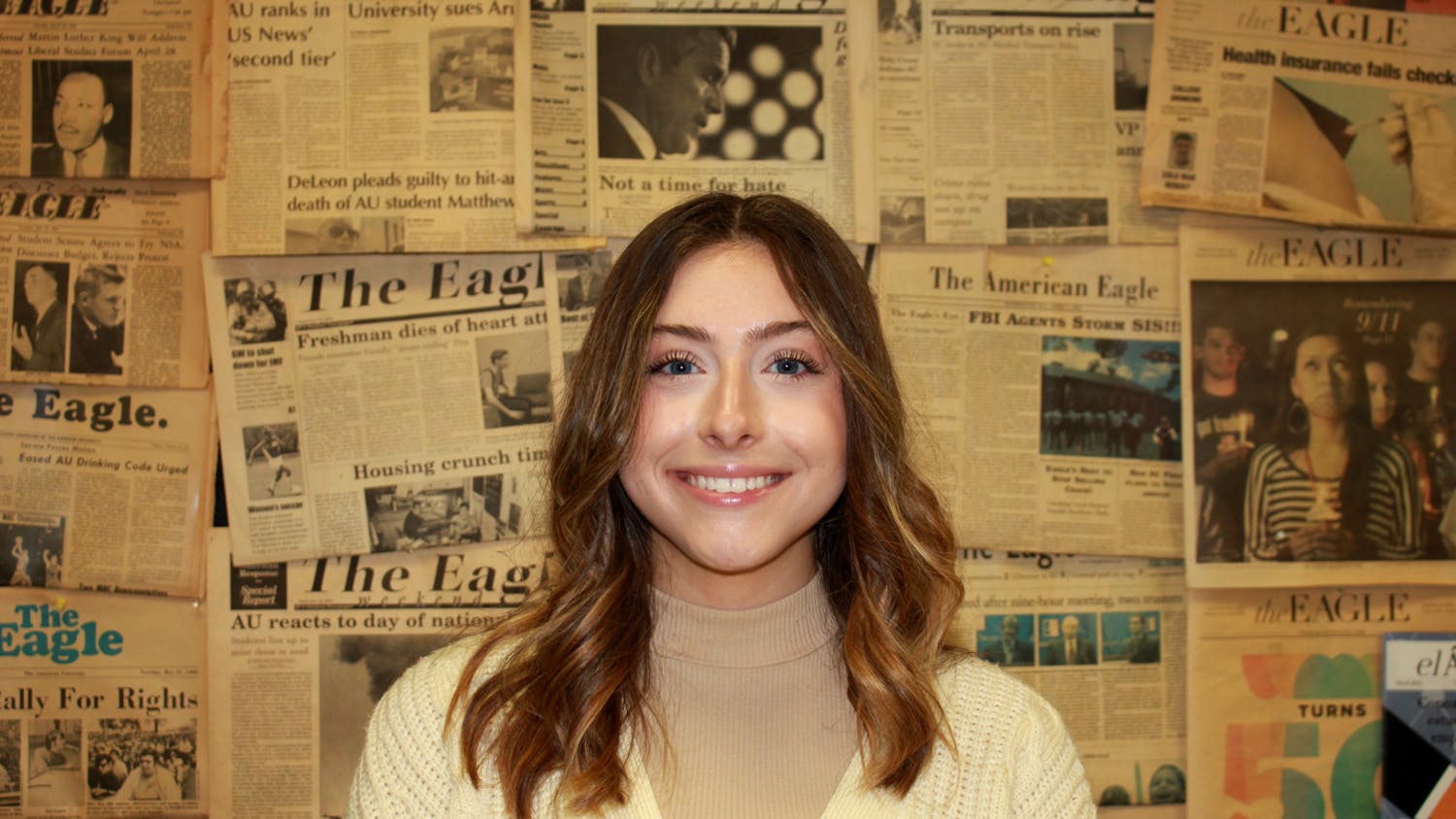AU students are on the go year-round, and that only intensifies as the temperature gets warmer and the spring semester ends. From political conventions in California to volunteer trips in South America and beyond, summer takes students away from AU and into the world around them. This summer, the Eagle is launching a summer series chronicling their adventures. Join us as we publish a new story weekly on how students are spending their summer #AwayFromTheNest before they return to campus in the fall.
After weeks of stressful exams and anxious goodbyes, most college students kick off their summer breaks with some much needed relaxation. And then there’s Cassidy Rozanski.
Only a few days after moving out of her Letts Hall dorm room, the School of International Studies sophomore packed her suitcase for a three week Alternative Break trip to Rwanda. Alongside 9 other students and Professor Chapurukha Kusimba, Rozanski sought to learn how non-governmental organizations (NGOs) focused on women and youth empowerment collaborate with the Rwandan government. After almost a month back in her Connecticut home, Rozanski spoke to The Eagle via Skype to discuss her motivations, voluntourism and the lessons she learned while abroad.
Eagle: What made you want to apply for an Alternative Break trip and specifically to travel to Rwanda?
Cassidy Rozanski: I just wanted something new, something out of my comfort zone and that I didn’t know a lot about. The only thing people know about Rwanda is the ‘94 genocide, so I kind of wanted to know more than, “In 1994, there was a genocide.” It’s been 22 years. How about now? Another part was that I wanted to see if I could actually go on the ground in a foreign environment and see myself in this kind of role. Could I actually go somewhere across the world and work in a NGO somewhere, or is that just unrealistic for me?
Eagle: There’s an argument out there that alternative breaks are a kind of “voluntourism,” the idea that visitors can actually harm the communities they are trying to help or learn more about. Did you ever consider this perception?
CR: This came up a lot during orientation…[especially] ethical photography, which I think plays into the voluntourism thing a bit. When we got there, it was actually reverse from our training, which was hilarious. In our training, we were taught, “Hey, you see a group of black children, maybe don’t take a selfie with them and make it your Tinder profile picture.” But when we got there, it was totally opposite. Everyone we saw was like, “White people! Picture?” I was just like, “Um, okay.” [laughs]
Eagle: What is one of your favorite memories of your time in Rwanda?
CR: The second week we were there in Butare [a city of 77,000], we started the week meeting with young single mothers. We essentially just sat in on a finance literacy workshop. . . Later in the week, we walked up this ridiculously scenic hill and there’s this beautiful large tree and this view of the mountains, and all these women that we saw at the class were there again. It was awesome because the first time we didn’t really get to talk to them, but this time it was like, bam.
We had them on one side, our translator and then us on the other side. It was so great to see them totally humanized, because they’re really about our age, a year or two older. Some of the questions they started asking us, they were just going for it, like sex in the U.S. and certain cultural norms with sex. It got our translator super embarrassed, and then they started trying to teach us traditional dance. We tried to teach them American dance and that failed miserably, and then that turned into, “let’s play a soccer game.”
It took these women that we were just viewing as, “Oh, look, these are beneficiaries of these programs” and told us, “no, these are women. These are people. We played soccer with them. They’re human beings.”
Eagle: I’ve seen an iconic picture of you and someone from your group with a toilet. Care to explain?
CR: I was saying this picture should be in the alt break’s brochure [laughs]. It should be on the website. The second or third day in our house that we rented, the water went out. We were cool and didn’t take showers and used wipes, except we kept using the toilet. The water came back on, and we thought we could flush whatever was in the toilet, except it didn’t flush. That was a bit problematic. And there were also no plungers. I don’t know if plungers exist in Rwanda at all, but there definitely was not a plunger in that house.
I really, really needed to use the bathroom as we’re in the middle of watching a movie. I go upstairs to the bathroom, and then I’m like, “Crap, the toilet doesn’t flush and it’s all backed up. Oh, this is disgusting. I can’t use the bathroom because I’m just going to ruin it more.” So then Leah, one of my roommates, and I decide, “Okay, there’s no plunger, we need to scoop the gunk out of the toilet.” We get someone to cut the top off of an empty water jug, and as I hold that, Leah uses the toilet bowl cleaner to scoop out all the gunk in the toilet into the container that I was holding. Fortunately, my nose was stuffed that day so I couldn’t really smell what was going on [laughs].
Eagle: Any intense moments you had to work through?
CR: Throughout the trip, we went to a lot of genocide memorials, and while each genocide memorial was difficult...the way Rwandans commemorate genocides is very different than how we deal with anything in our museums. The U.S. is very sanitized – the things that happened are over here, but you’re over here and glass is between you and the things. Whereas you go to some of these memorial sites [in Rwanda] and you walk into a church and here’s just piles of clothing of all the people who were murdered in this church. You wouldn’t, but you could just reach out and touch the clothes if you wanted to. You’re walking by and trying not to get some on your legs.
The toughest memorial was called Murambi...essentially it was a technical school being built [in the 1990s]. During genocide, people were sent there and told, “you will be safe here.” Police were sending them there and saying, “We’ll protect you.” Instead, it was a trap. They killed tons and tons of people, and part of the memorial is mummified people that they put in these classrooms that you had to walk through one by one. So many of them were little, little kids and you could still see hair on their head because of the mummification process. That was really, really hard. After the third room – they had around twenty, full of bodies – I just stopped walking in them. I couldn’t.
Eagle: What happens now that the trip is over and the group is headed back to campus in the fall?
CR: Look out for an event in early September. Our tour guide was filming us the entire time and he’s putting together a documentary for us of our trip. We’re going to showcase that and we’re going to bring a lot of stuff that we bought from different NGOs and try to sell them to support those organizations. That’s our first step...one group that we met with at the University of Rwanda was RVCP [the Rwanda Village Concept Project]. They do a lot of different things from HIV prevention to girls empowerment to malaria, and we were talking about creating a sister chapter, like something at AU to support what they’re doing on the ground in Rwanda because they have, like, no funding.






